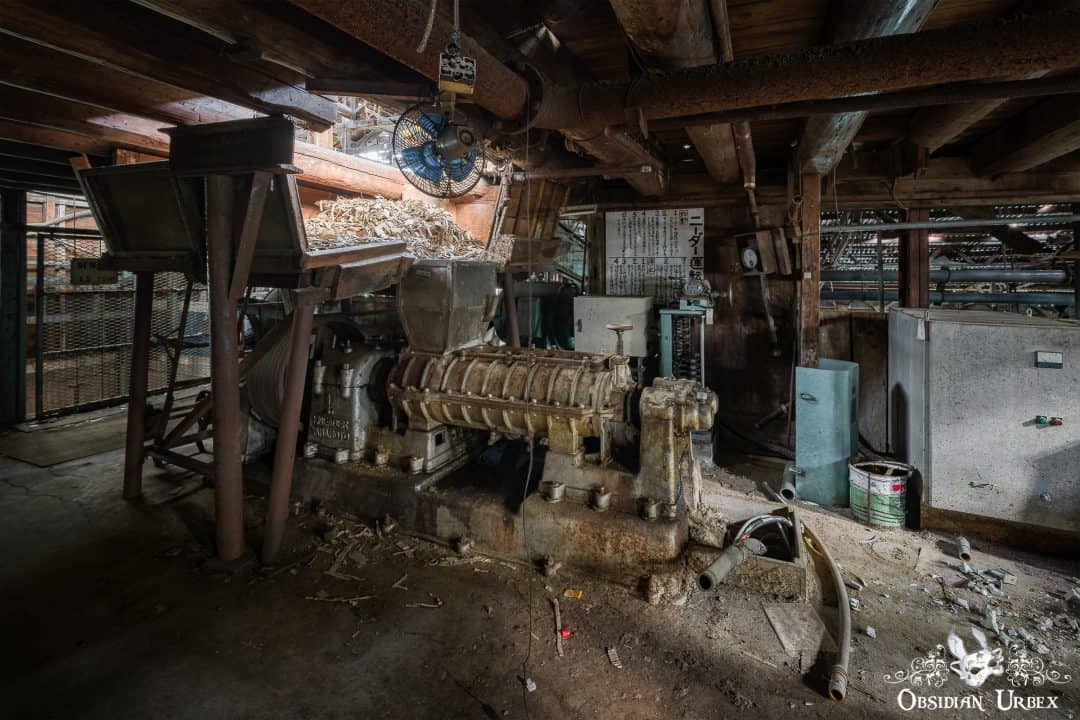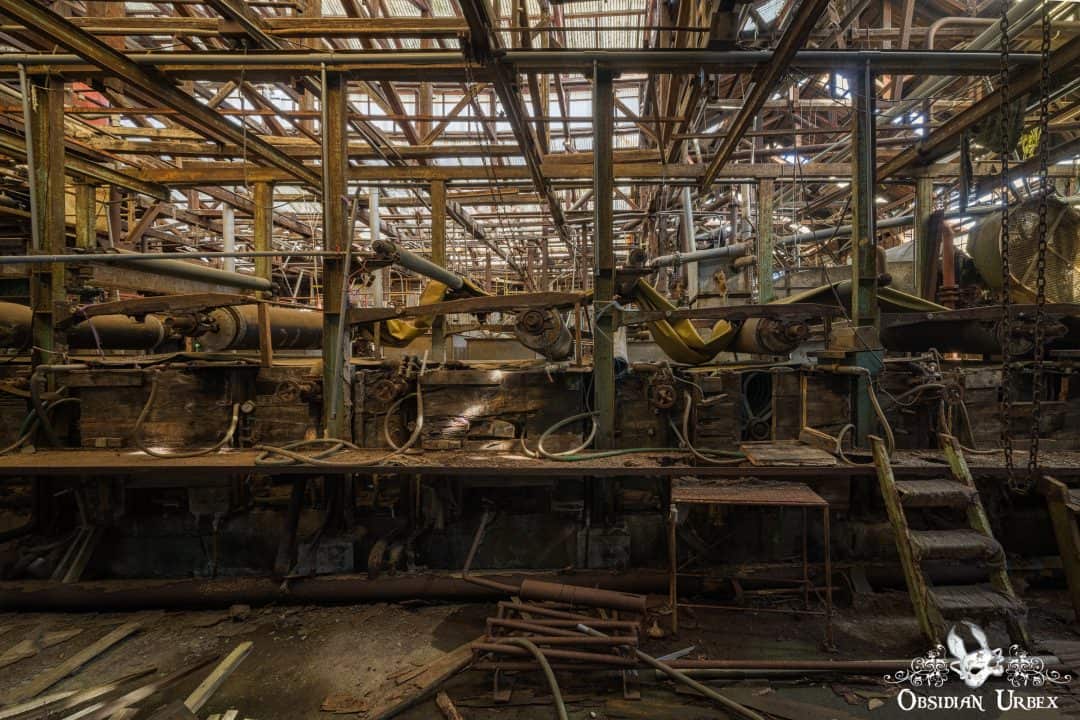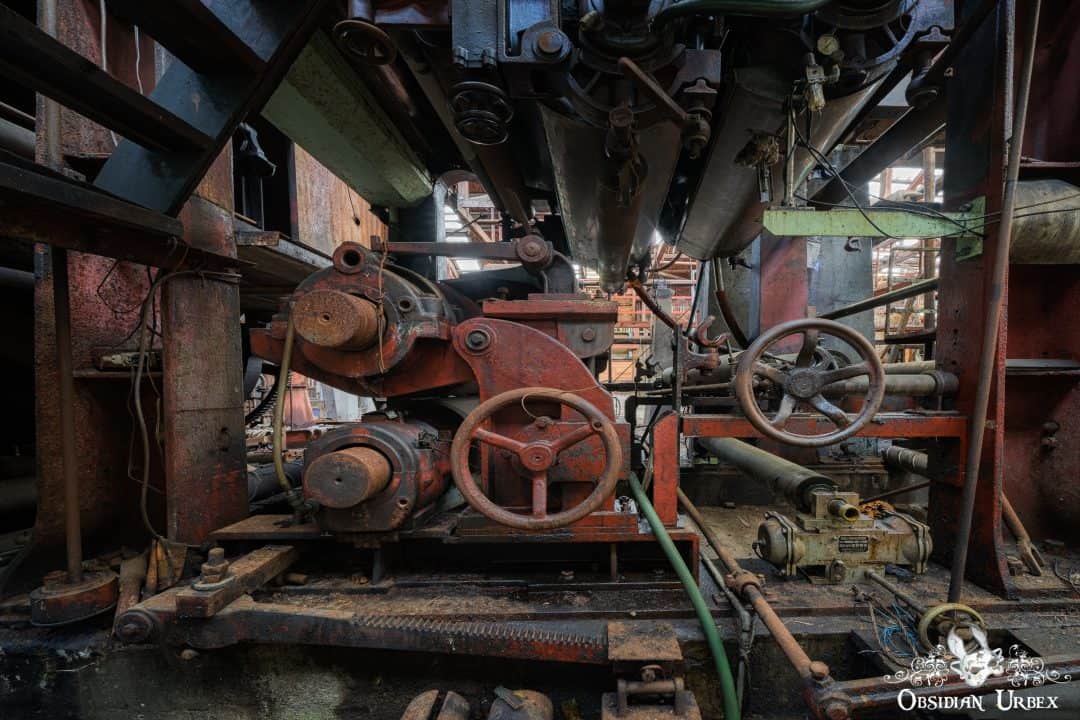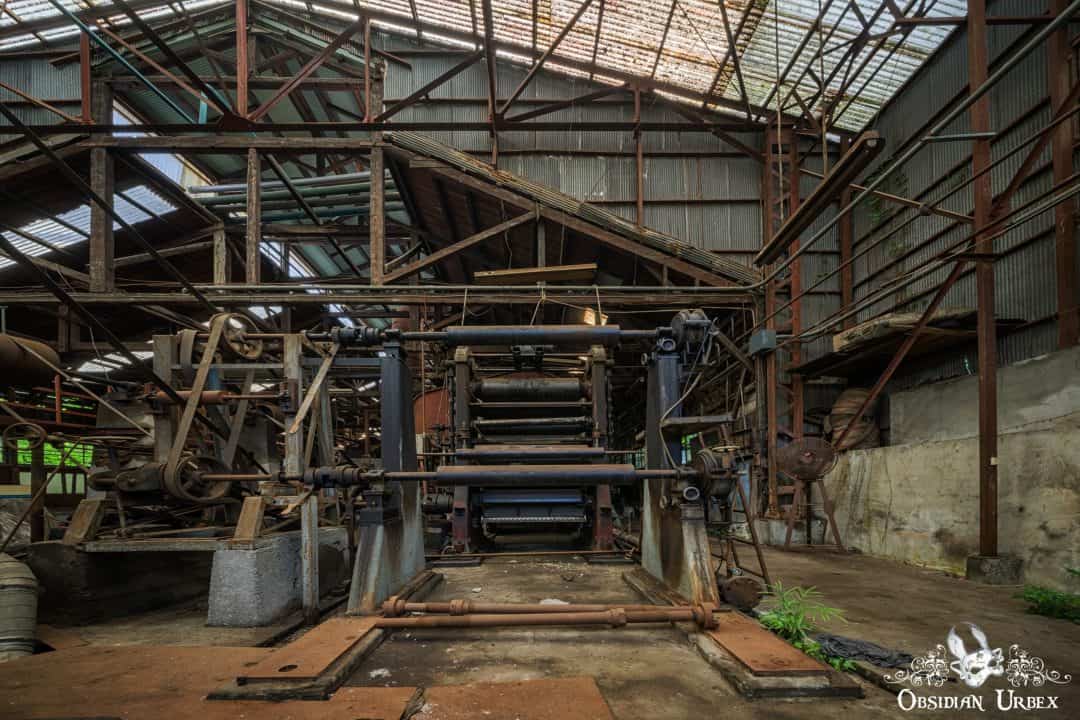Support me on Patreon for early access previews, rewards and giveaways!
Contact Me
Or use the contact form below.
Support me on Patreon for early access previews, rewards and giveaways!
Or use the contact form below.
Paper Industry O is a former paper manufacturer in Japan, and represents a wonderful industrial haikyo (ruin). The factory closed some time ago, judging by the state of the buildings and overgrowth. The complex is located on the banks of the river, where water would have been drawn from for use in the manufacture of the paper at this mill.
Paper Industry O is a sprawling complex made up of large buildings. These ruinous husks are made of corrugated tin and wooden beams. Many of which have collapsed, or are filled with scrap and junk. Currently, it appears locals from the nearby residential area are using some of the buildings to store farm equipment, or as a dumping ground for obsolete items.
The main paper production area lies within the largest of the corrugated tin buildings.
We visited this location as part of our 2019 Japan Haikyo Tour.

1- Firstly wood chips and blocks were loaded into hoppers on the upper floor, which were fed into wood pulpers. The pulping process here was probably two phases; an initial mechanical phase followed by a chemical phase. During the chemical phase, the pulp is refined with salts and sulfurous acids to remove impurities and bleach the pulp.

2- Secondly, the pulp would be prepared into a stock. The pulp is pumped through a series of tanks, here they are bath-shaped concrete vats with white ceramic tiles. Propellers agitate the mixture. Fillers are added at various points as the pulp moves from tank to tank. These fillers include whitening agents, as well as additives to improve strength or increase the opacity of the final product.

3 – Next, the pulp then passes through screens and then through various mechanical rollers and presses. These rollers progressively removing water and compressing the fibres. The pulp is forced over rollers which press a large felt sheet onto the paper, soaking up more of the water.

4 – The paper now passes into the dryer section. Here hot air, in conjunction with more rollers, and the paper dries further. The paper would then pass onto the large calendar rollers. The paper is rolled to a uniform thickness. Any bumps in the surface texture are also smoothed out at this point.

5 – Finally the paper is spooled onto the master roll, for drying before the cutting process.
Seen a photo you love? All my images are available as prints, please do Contact Me and let me create your perfect bespoke artwork.
Which photograph caught your eye the most? How did this location make you feel? Do you have a question? Let me know by leaving a comment!
I add new content every week, ranging from exciting new locations to blog articles about my road trips. My beautiful newsletter will bring my photographic adventures direct to your inbox!
Your email address will not be shared, or publically displayed. I will only use your data to send you the newsletter, as outlined in the Privacy Policy. You can unsubscribe at any time, via the opt-out link included in every email.
1 - Please do not ask for location addresses, see FAQ.
2 - Your email address will not be shared, or publically displayed. I will only use your data to reply to your message, as outlined in the Privacy Policy
Superb photography. Interesting write-up on the paper making process, brilliantly researched.
Thank you 🙂